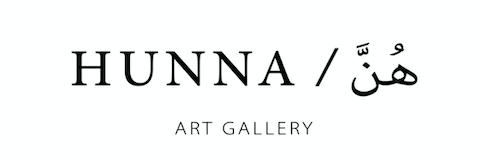Joud Fahmy’s body of work is comprised of sculptures and installations that depict female Saudi narratives whilst exploring themes of identity, gender roles, and social norms. Portraying female interiority is a common thematic element in Fahmy’s practice. The subject of her work, namely, the female body is in itself a form of transgression, as Saudi Arabia’s societal cultural norms dictate a strong distinction between public and private realms. The Saudi female body, her identity and subjectivity was - and continues to be - obscured and consigned to private spheres.
Nevertheless, Fahmy’s practice and sculptural artwork transcend the boundaries between the private and public domains. Drawing on her own emotional experiences, the artist utilizes sculptures as a means to navigate and articulate intimate introspections on gender, body, and identity politics. For instance, following her diagnosis with dyslexia, Fahmy experienced a heightened sense of bodily awareness. She felt as though her significance had been reduced to her reproductive ability. The flood of emotions culminated in the creation of Is This Me? (2024), a sculpture depicting an externalized uterus made of metal and wrapped in dyed rope. In this and other works, Fahmy’s artistic practice enacts as a form of cathartic release.

Is This Me? (2024)
Moreover, her sculptural processes involve physically strenuous undertakings with unwieldy materials, such as metal and heavy ropes. The artist’s infatuation with the labour-intensive nature of practicing sculpture is linked to her background as a Judoka representing Saudi Arabia in the Olympics (2016). The physical exertion Fahmy undergoes during her sculptural process avails her a similar sense of bodily liberation and empowerment that Judo provided. The practice of sculpture has been intimately interwoven with machismo (1). Hence, Fahmy’s sculpture contributes to making visible the potentiality of the body and thus renegotiates our perceptions of it. The materials and mediums used by Fahmy allow the artist to interrogate and address ideas of gender and sexuality. Fahmy notes that materials, such as rope and metal, possess underlying associations with masculine and feminine ideas. The notion that ‘the medium is never gender neutral’ is similarly echoed in Nicholas Chare’s “Sexing the Canvas”.
Fahmy alludes to the gendered perception of metal as inherently “masculine” based on its associations with strength and durability. However, in Instability (2023), metal’s metaphorical connotation to stability is subverted. Through welding and manipulation, Fahmy transforms surplus metal – from previous artworks – into distorted forms, symbolizing internalized struggles and the emotional nuances of conforming to societal pressure to uphold a façade of perfection. Rather than conforming to traditional uses of metal, Fahmy reanimates its properties, imbuing it with new meaning and challenging established notions.

Instability (2023)
Additionally, the artist reiterates her fascination with rope and its multifaceted nature, which renders it relevant across diverse sectors of everyday life. Its utility spans pleasure and pain, protection and peril, construction and destruction, enabling rope to transcend binary structures. Fundamentally, Fahmy regards it as the “feminine”. Composed of several smaller strands of twine, the material is bound together to form something stronger. Therefore, the artist’s use of rope to depict the “feminine” accentuates ideas of collective action.
For example, Fahmy’s mixed media installation Rooted Strength: The Generation of Women Who Shaped Our Lives (2023) acts as a tribute to the older generations of women who struggled for their rights, “pushed upwards” and paved the way for the generations that followed them. The work stimulates awareness and reminds the contemporary Saudi generation of the struggles these women endured and their achievements, especially since it was largely undocumented. Thus, it functions as an archival material. This form of collective remembering and storytelling bridges gaps between generations of women and thus enables collective action and consciousness-raising.

Rooted Strength: The Generation of Women Who Shaped Our Lives (2023)
In addition to materiality acting as metaphors within Fahmy’s sculptures, it also plays on the viewer’s bodily engagement. The artist’s departure from painting on canvas to sculpture underscores her pursuit to convey a tangible reality through her art. Accordingly, sculptures activate a more direct physical and bodily-engaged response from the viewer (2). Fahmy strategically positions viewers' interactions with her artwork and its materiality, fostering an active form of engagement.
Deemed as the principle target of power and locus of social control, the body emerges as a critical site of engagement for the activation of female experiences (3). Hence, the artist's manipulation, exploration, and fusion of materials constitute acts of transgression that transcend societal barriers. As Fahmy breathes new meaning into materials, her artworks challenge and rewrite gendered power dynamics.
---
Notes:
1 - Carson, Fiona. “Sculpture and Installation.” In Feminist Visual Culture, edited by Fiona Carson and Claire Pajaczkowska, 55–74. Edinburgh University Press, 2000. http://www.jstor.org/stable/10.3366/j.ctvxcrs42.10.
2 - Alex Potts, The Sculptural Imagination: Figurative, Modernist, Minimalist (New Haven, CT: Yale University Press, 2009).
3 - Amelia Jones, “Feminist Subjects versus Feminist Effects: The Curating of Feminist Art (or Is It the Feminist Curating of Art?),” ONCURATING, 2016, https://www.on-curating.org/issue-29-reader/feminist- subjects-versus- feminist-effects-the-curating-of-feminist-art-or-is-it-the-feminist-curating-of-art.html
